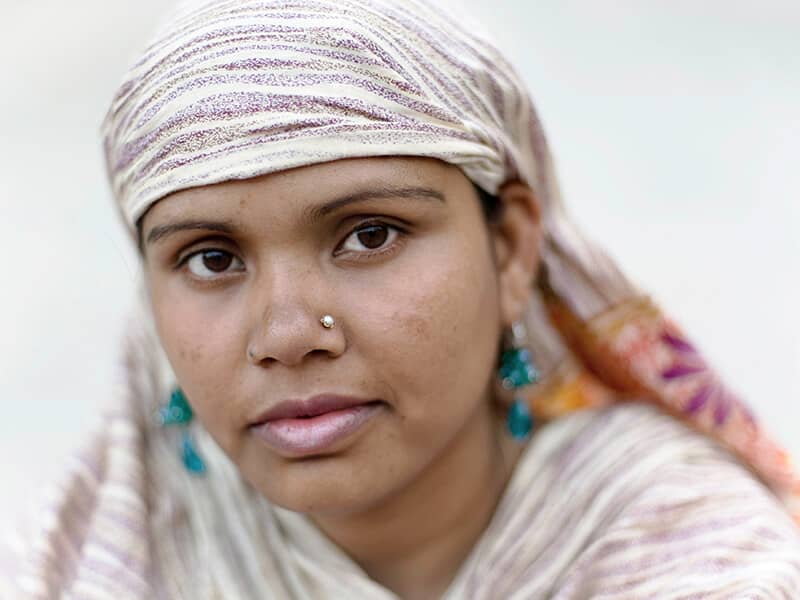NEW YORK, April 26 (AP)--American Muslims form a growing and maturing community worshipping in 1,209 mosques from coast to coast, according to the first comprehensive survey of the faith's presence in the United States.
The findings, being released Thursday in Washington, D.C., also indicate that U.S. mosques are less bound by ethnic and racial divisions than in the past and are adapting to American culture, even though leaders express ambivalence about the United States.
There has been disagreement over U.S. Muslim numbers, and little hard research. The new study, led by professor Ihsan Bagby of Shaw University in Raleigh, North Carolina, offers these figures:
-6 million to 7 million is a reasonable estimate for Americans who would consider themselves Muslims.
-2 million Muslims are religiously involved to varying degrees with local mosques, for example by attending the two yearly Eids (festivals). That projection was based on a survey of 416 mosque leaders.
-411,000 Muslims nationally attend the Friday Jum'ah prayers in an average week, judging from mosque leaders' reports; 78 percent of those attending are men.
The statistics excluded Louis Farrakhan's Nation of Islam, the Ahmaddiya movement and other groups that mainstream Islam has regarded as heterodox, Bagby said.
The mosque survey was co-sponsored by the Washington-based Council for American-Islamic Relations, New York-based Islamic Circle of North America, the Islamic Society of North America and Chicago's Muslim American Society led by Imam W. Deen Mohammed.
The four organizations are three decades old or less, and 87 percent of the local mosques in the survey were founded since 1970.
Another rough indicator of growth comes from a previously unpublished survey conducted by the 52-year-old Bagby, a former United Methodist who converted to orthodox Islam in 1969. In 1994, he located 962 U.S. mosques, estimating 500,000 sometime worshippers and average Jum'ah attendance of 144,000.
Historically, black Americans have operated their own mosques and immigrants' mosques were divided by national origin. The new survey showed blacks remain dominant in 27 percent of mosques, South Asian immigrants in 28 percent and Arab-Americans in 15 percent. The others were more pluralistic.
``Our mosques are much more diverse than we think,'' Bagby said, though falling short of Islam's multiracial ideal. ``Muslims are to be one body. That has not been realized yet, but the fact we are headed in that direction is clear.''
``Muslims are very divided on how they view America,'' Bagby said. Heavy majorities of mosque leaders strongly agreed that believers can learn from the nation's technological advances and should be involved in politics and American institutions.
In Muslim countries, Bagby said, the mosque ``is not a community center, not a platform for involvement in society,'' the way it has evolved in America in order to adapt to Muslims' needs.
Attendance by some women at Friday prayers is the norm in the United States but unheard of in many Muslim societies, Bagby said. Sixty-nine percent of mosques run by governing boards allow women to serve.
Other highlights from the mosque survey:
-EDUCATION: Most mosques run weekend religious classes for children and half run them for adults. In addition, 21 percent of mosques operate full-time day schools; estimated nationwide enrollment is 31,700.
-FINANCES: A fourth of mosques had annual incomes of dlrs 100,000 or more. Half said finances were ``good'' or ``excellent.''
-AGE: Among regular Muslim worshippers, 47 percent were reported to be 35 or younger.
-CONVERSIONS: Among the regulars, 29 percent were converts to Islam. Among 19,700 annual converts, an estimated 14,000 were black and 13,000 were men.
-LEADERSHIP: ``Mosques are not staffed well,'' the report says. There were no paid full-time employees at 55 percent of mosques, and 45 percent had no paid staff even on a part-time basis. The typical imam or other mosque leader is a part-time volunteer who makes a living elsewhere.
-THEOLOGY: 21 percent said their mosques maintain a literal interpretation of the faith drawn directly from the Quran and Sunnah (practices of the Prophet Muhammad); 71 percent said they take into account the purposes of revelations in light of ``modern circumstances.'' The rest followed other Muslim traditions or did not respond.
The survey project started by compiling a list of all known orthodox mosques. Of these 1,209, 631 were randomly selected and leaders from 416 responded to phone interviews conducted last year. The sampling margin of error was 5 percentage points.
The project was planned by Bagby, Lawrence Mamiya of Vassar College and Mohamed Nimer of the Council on American-Islamic Relations. A Georgetown University center did the data analysis. The survey was part of an interreligious study of 14,300 U.S. religious congregations sponsored by Hartford Seminary and funded by the Lilly Endowment.

